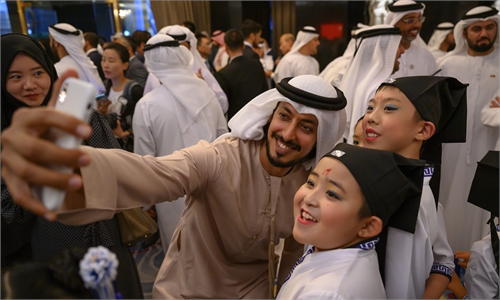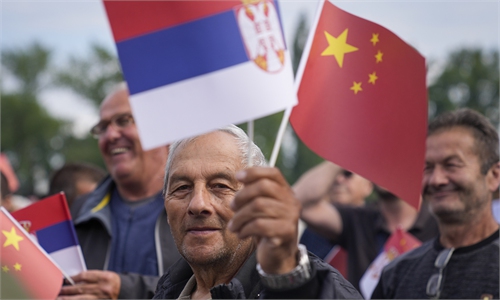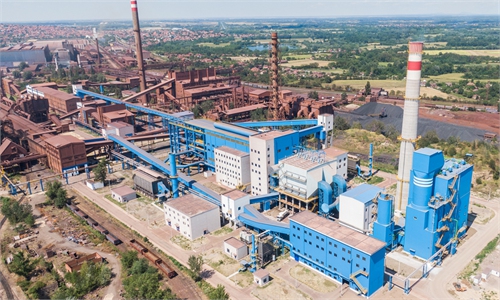IN-DEPTH / IN-DEPTH
Xi's Footsteps: Xi's Central Asia trip consolidates brotherhood, boosts cooperation
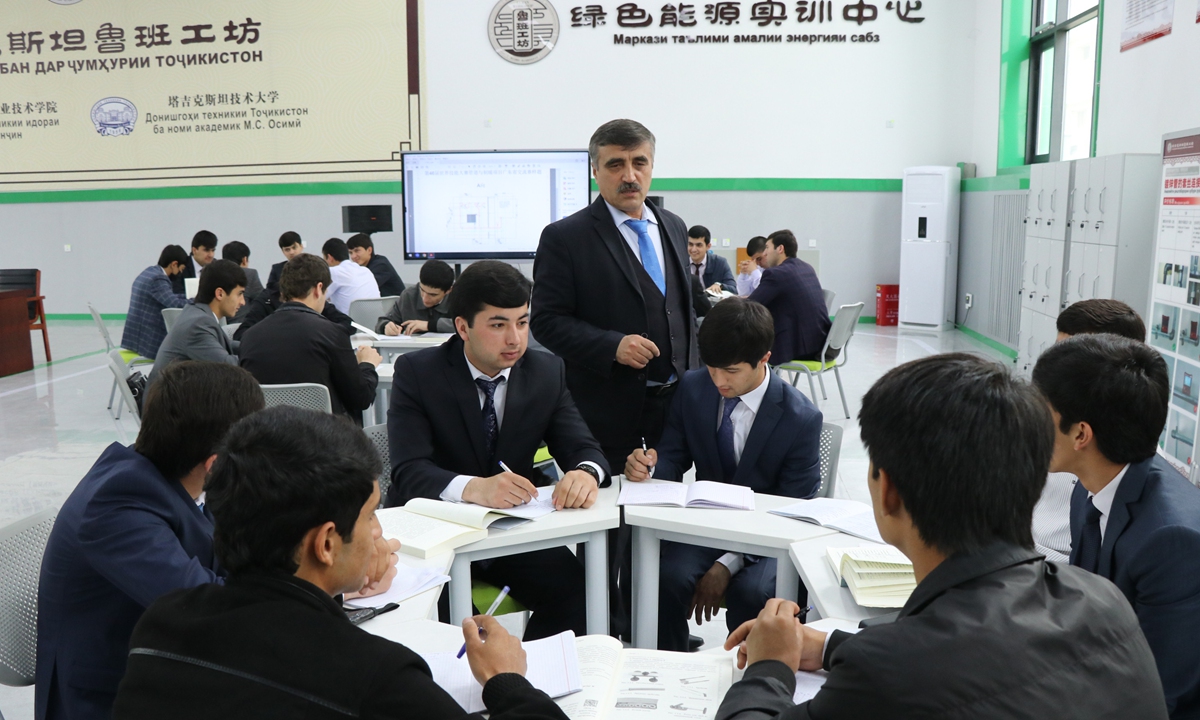
Students have class in the Luban Workshop in Dushanbe in Tajikistan on April 17, 2023. Photo: VCG
Chinese President Xi Jinping's first Central Asia visit as head of state dates back to 2013 when he proposed the concept of the Silk Road Economic Belt in Astana. In the following years, he visited the region frequently for bilateral and multilateral discussions. On July 2 to July 6, the Chinese president again set foot on this land for attending the 24th Meeting of the Council of Heads of State of the Shanghai Cooperation Organisation (SCO) in Astana, and paid state visits to Kazakhstan and Tajikistan.
Streets adorned with Chinese flags, crowds dancing at the airport, children singing Chinese songs, grand official welcome ceremonies…Global Times reporters observed these moments during Xi's visit and tracked his footsteps to Central Asia in the past, which combined telling a story of historical friendship, fruitful cooperation, and a promising future.
In five days, Xi attended more than 30 bilateral and multilateral events, which involved political, economic, and cultural topics, and included reunions with old friends, while also meeting new friends, Chinese Foreign Minister Wang Yi said at a press conference.
It is significant to guide the direction of the development of the SCO, deepening China's good-neighborly relations with regional countries, and promoting the substantial advancement of building a community of shared future among neighboring countries, said Wang.
Bridges for mutual learning between civilizations
As Xi's plane entered the Kazakh airspace, two fighter jets from the Kazakh Air Defense Forces took off to escort it and a touching moment at the Astana airport unfolded when a group of Kazakh children sang the Chinese song "Ode to My Homeland" to welcome him.
During previous 11 years, Xi had visited Kazakhstan five times, and has witnessed steadfast progress made on interconnectivity under the framework of the Belt and Road Initiative (BRI), made significant remarks on bilateral cultural exchanges since ancient times, and left numerous memories of friendship and cooperation.
"Warm welcome!" Local residents cheered excitedly in Chinese on July 2, 2024 while lining the sides of the roads where Xi's motorcade passed. People waved the Chinese and Kazakh national flags near the landmark building of Beijing Tower in Astana, giving the city a festive atmosphere.
"China is one of the largest countries in the world. Many Kazakhs travel to China and bring back a lot of useful information and technology. I think cooperation with China is having a very positive impact on our country," a Kazakh resident surnamed Salima told the Global Times.
Energy has been a cornerstone of China-Kazakhstan cooperation, with two projects holding flagship status - the China-Kazakhstan oil pipeline and the China-Central Asia natural gas pipeline.
The China-Central Asia natural gas pipeline A/B/C lines runs through Turkmenistan, Uzbekistan, Kazakhstan, and China. A key section of the pipeline within Kazakhstan was opened in 2013 during Xi's first visit to the country.
Kaiypov Yerseiit Zholmyrzauly, an executive at the Asian Gas Pipelieng LLP, a Kazakh-China joint venture, told the Global Times that the thriving energy cooperation with China has been helping Kazakhstan to diversify export channels and integrate into a larger energy market, and the wider use of natural gas also aligns with the green energy development goals of the two countries.
During this visit, President Xi and Kazakh President Kassym-Jomart Tokayev also jointly attended the opening ceremony of a road transport route to a Caspian Sea port. This marked a comprehensive, multi-dimensional, Trans-Caspian International Transport Route (TITR) integrating road, rail, air, and pipeline transportation network establishment.
The TITR begins at East China's port of Lianyungang in Jiangsu Province and runs through Kazakhstan, the Caspian Sea, Azerbaijan, Georgia, and European countries.
This major transport system has turned land-locked Kazakhstan into a land-linked country. As of 2023, more than 80 percent of Kazakhstan's major trade commodities such as mineral products and grains were exported via the Lianyungang port, Du Anji, a representative of the Lianyungang New Silk Road International Container Development Co, told the Global Times previously.
In parallel with infrastructure connectivity, the two heads of state also witnessed the "soft connectivity" through new cultural and educational projects: Attending the opening ceremony of the Chinese Culture Center in Astana and the Kazakh Culture Center in Beijing, and unveiling the Kazakhstan Branch of the Beijing Language and Culture University (BLCU) in Astana. BLCU in Beijing is where Kazakh President Tokayev studied the Chinese language and made profound memories between 1983 and 1984.
Walking through the cultural exhibition hall of the campus on July 3, Global Times reporters noticed a photocopy of Tokayev's student ID card, which documented his years in China and epitomized the ever-lasting friendship between China and Kazakhstan.
The opening of the university's branch in Astana is expected to play an important role in promoting mutual understanding and exchanges between China and Kazakhstan, BLCU president Duan Peng told the Global Times.
The plan is to build the branch campus into a high-level university with undergraduate, master's, and doctoral programs in the next 5 years, which can radiate throughout the entire Central Asian region, Duan said. "Young Kazakh people can study here, make friends, and build bridges for mutual learning between civilizations."
On the Astana campus, a Qing Dynasty-style (1644-1911) pavilion named "Tang Di" will be built, the Global Times learned. Tangdi is a shrub from the rose family. In the "Book of Odes," the oldest existing collection of Chinese poetry dating back to the 11th to 6th century BC, tangdi is a symbol of profound brotherhood.
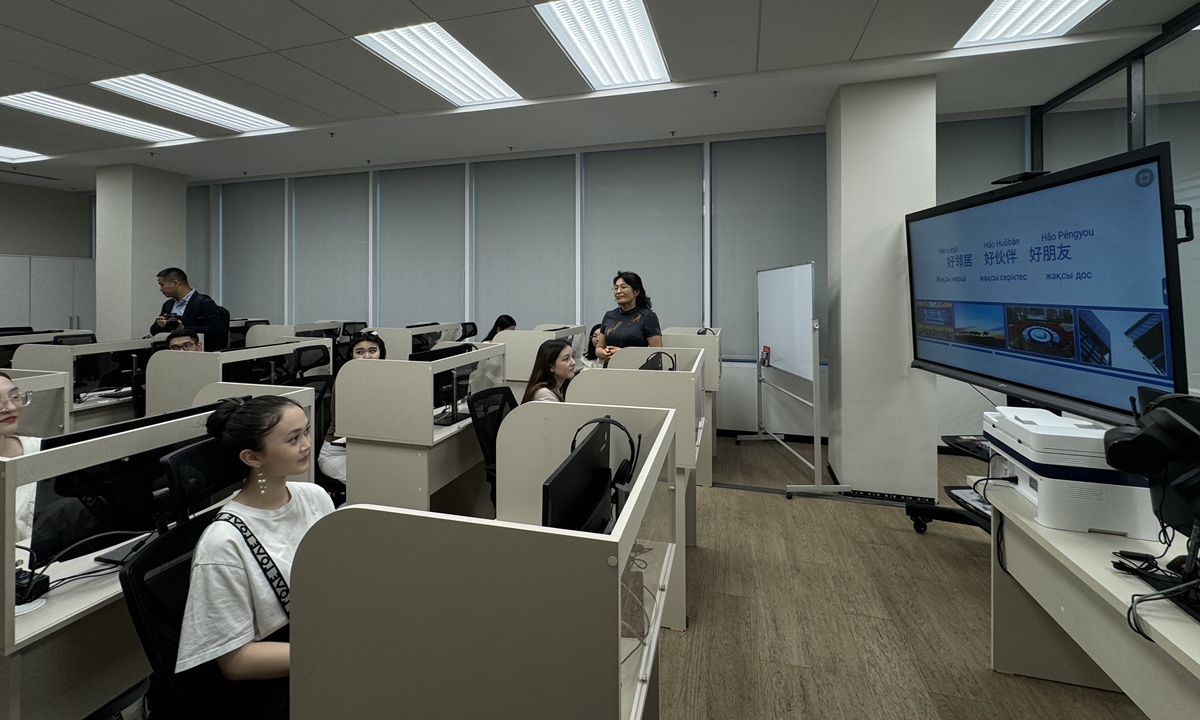
Students learn Chinese in Kazakhstan Branch of the BLCU in Astana on July 3, 2024. Photo: Xing Xiaojing/GT
Good neighbors, friends, partners and brothers
Upon arrival in the Tajik capital of Dushanbe late on July 4, Xi noted in a written statement that China and Tajikistan are good neighbors who help each other, good friends who support each other, good partners with mutual benefit and win-win results, and good brothers who treat each other with absolute sincerity.
Young Tajik people dressed in traditional costumes and performed folk dances at the airport to welcome Xi. Global Times reporters felt the hospitality and hearty affection for the Chinese president among Tajik people.
Xi has met with Tajik President Emomali Rahmon 15 times since the beginning of the new era and visited the country three times, in 2014, 2019, and this July. During this recent state visit, the two heads of state announced the elevation of bilateral relations to comprehensive strategic partnership status in the new era.
They also attended the inauguration of a parliament building and a government building constructed with China's assistance.
When passing through the blue-domed new Parliament House of Tajikistan in the city center of Dushanbe, Global Times reporters noted that the magnificent building has already become a new calling card of the capital, attracting crowds of local residents to take photos.
On July 5, Xi awarded the "Friendship Medal," China's highest state honor to foreigners, to Rahmon, the first time this prestigious award has been presented outside of China.
Five years ago in 2019, also at the Palace of the Nation in Dushanbe, Xi received the Order of the Crown from Rahmon.
Global Times reporters also observed an interesting phenomenon in Dushanbe that locals greeted Chinese visitors in Chinese while the visitors tried to respond in Tajik language, an epitome of the people-to-people intimacy between the two countries.
For Tajik people, the relationship with China is not abstract, as it has brought about tangible benefits to their daily lives.
A10-minute drive northeast from the Tajik capital leads to the famous Dushanbe No.2 power plant, which was constructed with Chinese assistance. President Xi and President Rahmon attended the completion ceremony of first-phase project of the plant and the groundbreaking ceremony of second-phase project in September 2014.
Before this project, Dushanbe had to rely on unstable power imports when rivers froze and small hydropower plants suffered from outages. Power cuts were common as power supply could sustain lighting, heating, and industrial production.
The China-aided thermal power plant, which entered operation in December 2016, allowed Dushanbe residents to bid farewell to power cuts, darkness, and the cold in winter. Factories could maintain production year around.
"This [place] used to be an empty site but now massive buildings stand here," city councilor Nyyazov Umarali Saforovic told the Global Times, noting that the plant has since created more than 1,000 jobs for local people.
About 300 Chinese technicians come annually to work with us on repair and maintenance, and we have forged a deep and solid friendship in the process, Saforovic said.
Brotherhood more precious than any treasure
Joint ventures and Chinese wholly owned firms in Tajikistan have become a major source of tax revenue for the local government, and made important contributions to the socioeconomic development of Tajikistan.
Tajikistan also has the first Luban Workshop in Central Asia. Named after Lu Ban, a legendary craftsman who lived 2,500 years ago in China, the program combines academic education with vocational training, aiming to help BRI partner countries cultivate professional technical talent. President Xi has given particular care to this program.
The Global Times learned that the Luban Workshop in Dushanbe helps address the large demand for local talent when China and Tajikistan are having active economic interactions - there are about 500 Chinese companies operating in Tajikistan and Chinese investment has accounted for 34 percent of Tajikistan's total foreign investment over the past decade.
Similar workshops are also in operation in other Central Asian countries, including Kazakhstan, with more to be built.
At the first China-Central Asia Summit held in Xi'an, Northwest China's Shaanxi Province in May 2023, Xi, in his keynote speech, quoted a Central Asian saying: "Brotherhood is more precious than any treasure," and emphasized that solidarity, inclusiveness, and harmony are the pursuits of the Central Asian people.
Guided by head-of-state diplomacy, analysts believe the future of China-Central Asia cooperation is promising and full of potential. Following the four principles that hold the key to the success of China-Central Asia cooperation, namely mutual respect, good neighborly friendship, solidarity in trying times, and mutual benefit, China and Central Asian countries will jointly create a brighter future.
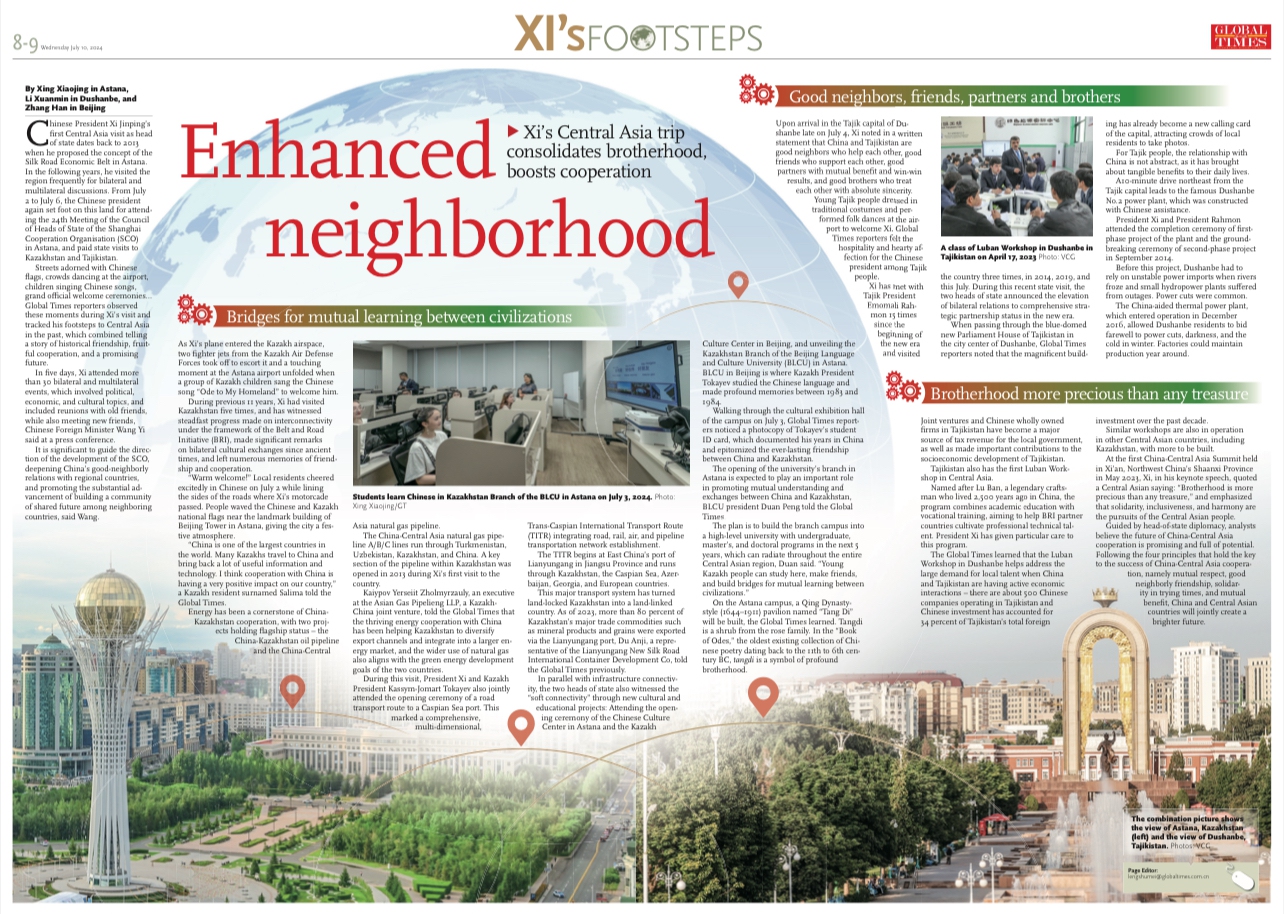
Enhanced neighborhood

